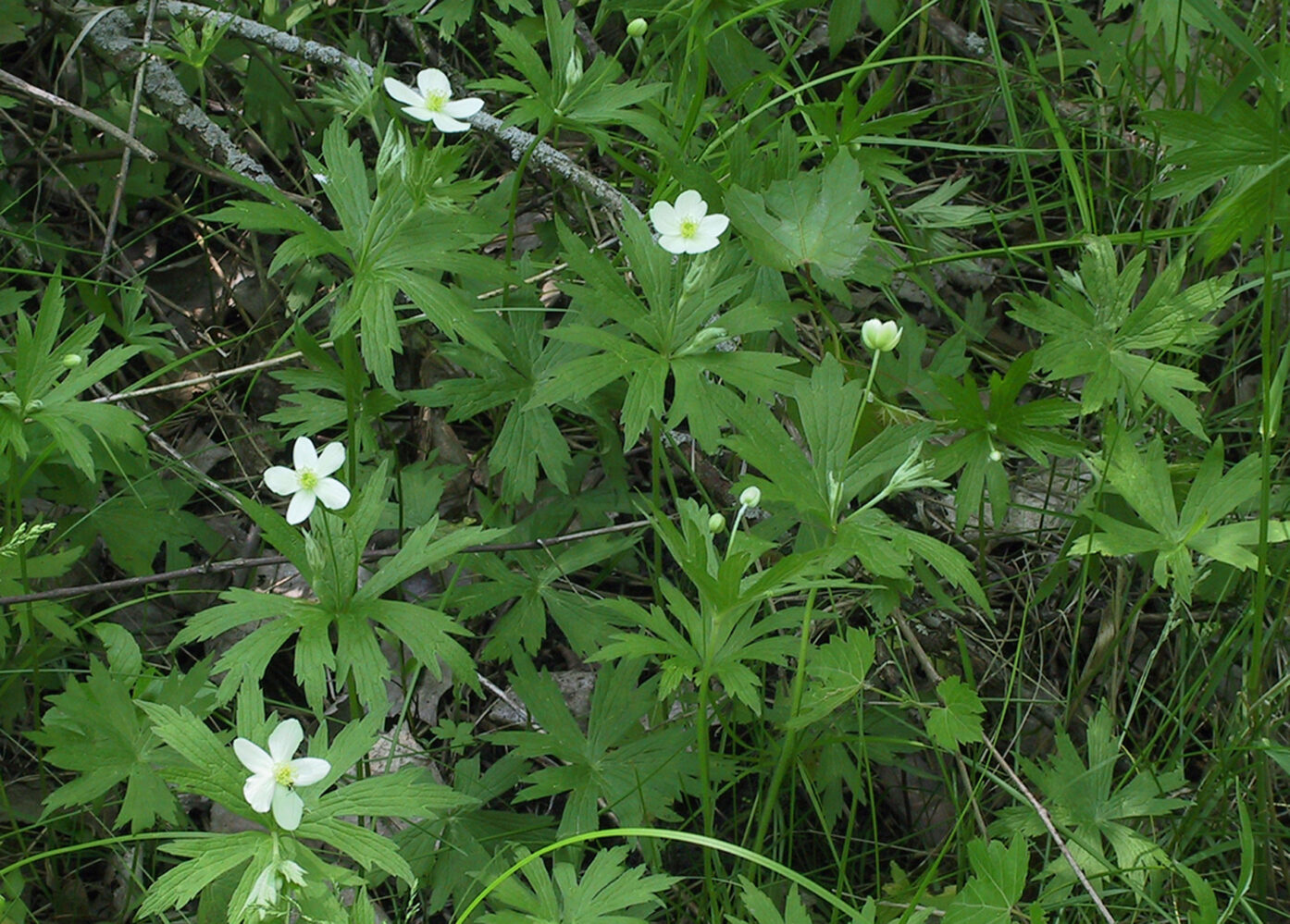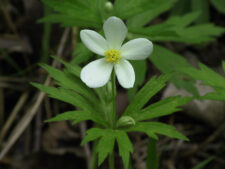
CANADA ANEMONE
Anemone canadensis
BUTTERCUP FAMILY
(Ranunculaceae)
 Identification
Identification
- Flowering time - May, June
- Common in moist floodplain habitat at Fontenelle Forest; less common on Neale Woods floodplain
- 5 showy white petals with golden center
- Whorls of 3-5 deeply divided leaves at end of stem
- Grows in colonies unlike our other 2 much less common anemone species (see Comments for details)
This rhizomatous native perennial, usually found in large colonies, grows from 1-2 feet tall. A whorl of 3 large, stalkless leaves lies at the tip of the stem (A); leaves are deeply divided into 3-5 (usually 3) lobes and the ends of each lobe are further divided into toothed structures with pointed tips (D). The showy white flowers up to 1 1/2 inches across are at the end of a long stalk rising from the center of the whorl of leaves (B,D). They have 5 pure white petal-like sepals and a golden yellow center made up of many small pollen-bearing anthers (C). Flowers follow the sun during the day and close at night.
Common, usually in colonies, in moist areas on Fontenelle Forest floodplain. It is less common on the floodplain at Neale Woods. Flowering occurs in May and June.
Canada Anemone, like its two relatives Tall Anemone (Anemone virginiana) and Candle Anemone (Anemone cylindrica), has deeply divided leaves and a single flower at the end of a thin flower stalk. Unlike Canada Anemone they are not colonial, most often found as single plants in drier upland habitats. Other features separating them from Canada Anemone include smaller, less showy flowers, leaves with short stalks, and cylindrical or oval seed heads.
Gilmore states in his book on uses of plants by Native Americans that: “The root of this plant was one of the most highly esteemed medicines of the Omaha and Ponca.” Only certain qualified persons were allowed to prescribe this plant for a variety of ailments, particularly wounds and other skin conditions.
Alternate common names are Meadow Anemone and Windflower.



